How to Work with SendPulse
Here is a brief guide about how to work with SendPulse.
The service toolbar consists of the standard upper menu and left menu that belongs to SendPulse only and contains the next items:
- Mailing lists – adding, editing and deleting address books
- My campaigns - here, you can create a new email campaign, view mailing history, and statistics.
- Reports - here, you will find all the statistics.
- Email templates – personal and integrated email templates.
- Automations – creating and editing autoresponders.
- A/B tests – split-testing creation.
- Subscription forms - create a new form or subscribe page here.
- Pricing plans - check and add your funds, see the billing history.
- Service settings - custom unsubscribe links and log reviews.

Before starting an email campaign creation, you should upload mailing lists to the Mailing List and activate the sender email address(es).
Sender Address
Let's start with the sender's address. Select "Service settings."
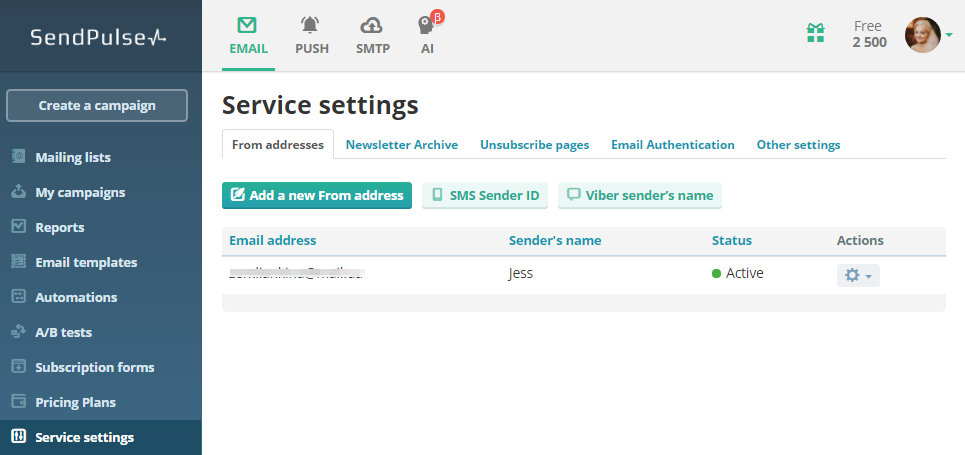
SendPulse allows loading an unlimited number of "From:" sender addresses (and only five addresses on the free plan), and it is an excellent opportunity to use several private and business email addresses.
Enter your email address and sender name, and the server will take it as a default "From:" address.
Each sender address should be activated beforehand. This is a one-time operation for a single email address. You can edit the sender's name only, but not an email address. Add and activate another one if you want to have more "From:" addresses.
Mailing List
We will talk over how to load recipients’ email addresses and create a mailing list. The option is available in the "Mailing lists" menu item.
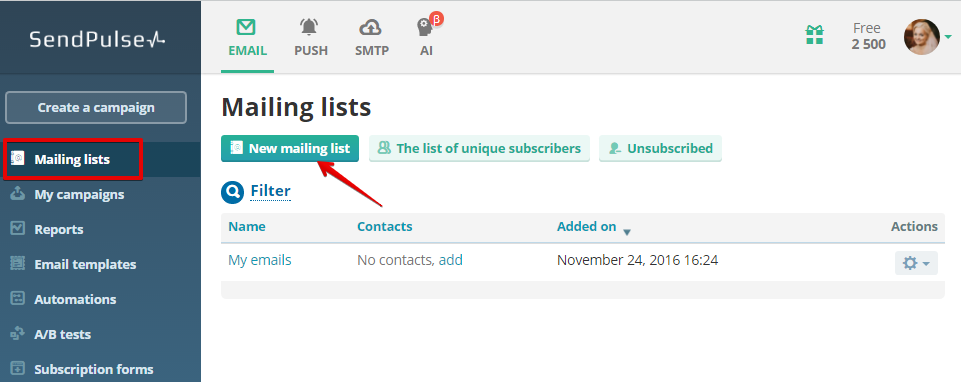
Select the "New mailing list" item and enter its name. Then you need to choose the way to upload a mailing list: manually or by loading file with necessary emails. SendPulse supports such file formats as following *.xls, *.xlsx, *.txt, *.csv.
You are not limited in the number of mailing lists to load, but you must activate every mailing list you create. Make it a rule to enable recipients' email addresses before sending emails out, as this operation can take several minutes. You have an opportunity to create your personalized mailing lists. They will contain the columns with a recipient’s personal information. You can also simplify the variable insertion into an email message by renaming the columns under lists loading.
You have created a mailing list and activated "From:" addresses. Now it's time to create an email message itself.
How to Create a Campaign
Select "Create a campaign" and go through four main steps.
Step 1. Add information about the campaign
Select a mailing list, choose an active sender email address, specify the sender's name and subject line.
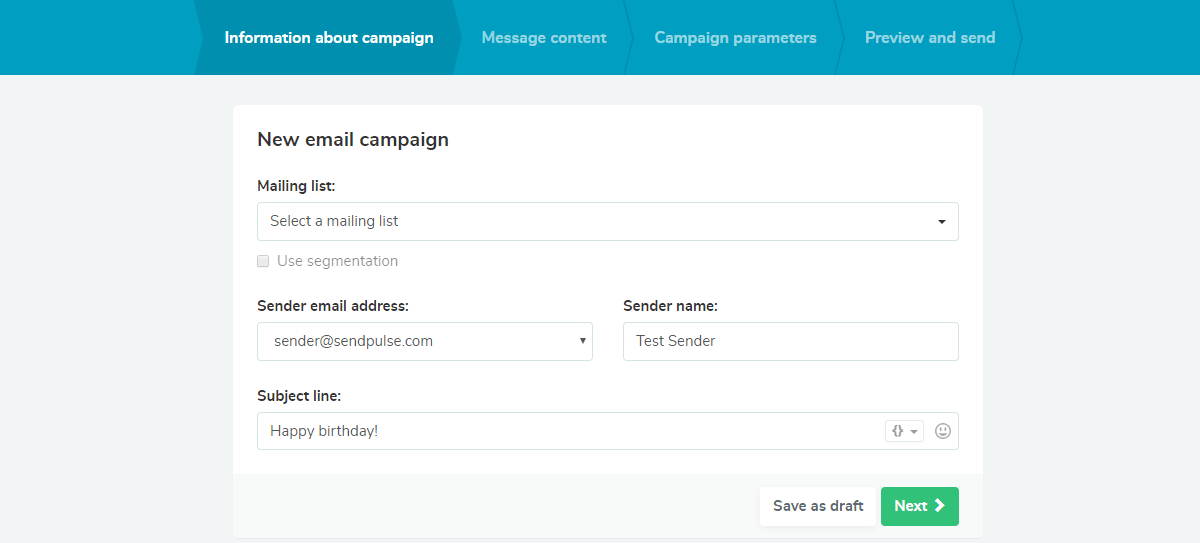
Step 2. Choose an email template and add text
At this stage, you choose the method of email creation: select an existing template, or construct a new one or import it from the archive, the link, HTML code.

Personalization
SendPulse inserts recipients’ personal information into each email message. You can insert data that was loaded to the Mailing List only. It may be information on the recipient's name, post, customer discount number, etc. that is placed in the corresponding columns of the mailing list.
The personalization is done by inserting the variables of {{name}} type into the email message body. The variable names correspond to the column names where additional information is placed. All the variables are available in the variables drop-down list.
We recommend using personalization on the creation of the email campaigns to get the recipients’ loyalty and pay special attention to their individuality.
Step 3. Set up additional campaign parameters
Collect statistics
Configure the options to collect statistics by the recipients’ actions, opens, or clicks.
The statistics are collected on every campaign sent. But only after delivery finishes and all the email messages are resent (48 hours as a rule), you'll get the valid statistics data.
The statistics are displayed in the "My campaigns" menu item by three chart types: campaign statistics opens by location, devices, and error statistics.
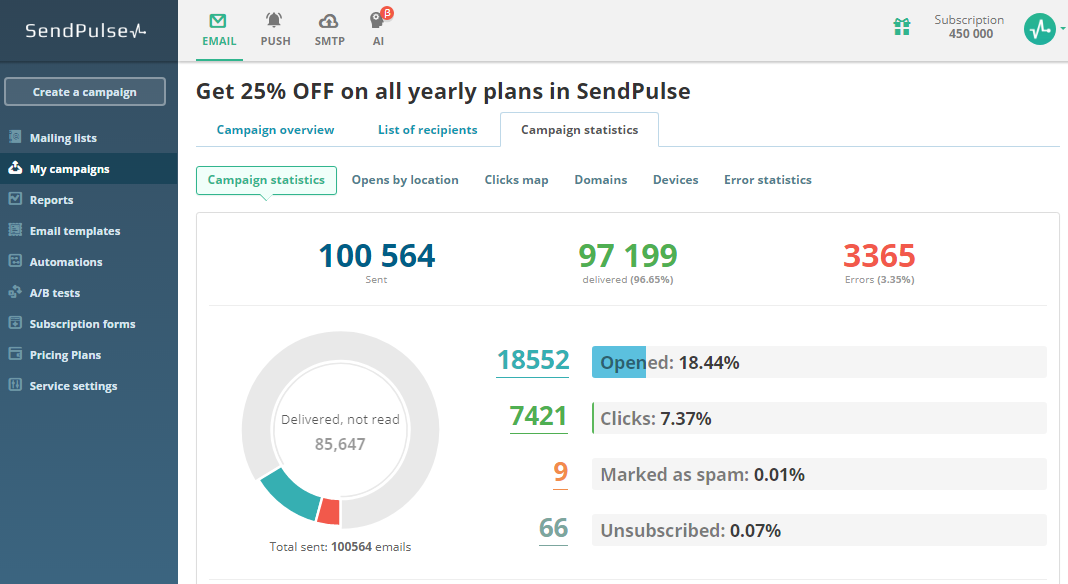
The chart displays the percentage of sent (delivered, failed, etc.) email messages to the total amount of recipients. You have an opportunity to review the detailed information on every delivery error.
Unsubscribe page
If you have created a custom unsubscribe page, you can link it to the email. Otherwise, the email will be sent with the default unsubscribe page. Also, it’s essential to set up the unsubscribe form language according to the language of your target audience.
The number of unsubscribe links you can create is unlimited, but only one of them can be specified as a default link.
What are the benefits of custom unsubscribe links? For example, it is useful and even necessary if you redirect the recipient to your web site page with the unsubscribe forms. Anyway, your links may improve your email campaign.
All the recipient addresses that have unsubscribed from your emails are blocked by the server automatically. You can review the list of blocked recipients in the "Unsubscribe reasons" menu item.
Subscription category
Add categories for your subscriptions, so your clients have an opportunity to unsubscribe from one subscription, but not from all of them at once. To create subscription categories, go to the "Unsubscribe pages" tab in "Service settings" and click "Email campaign categories."
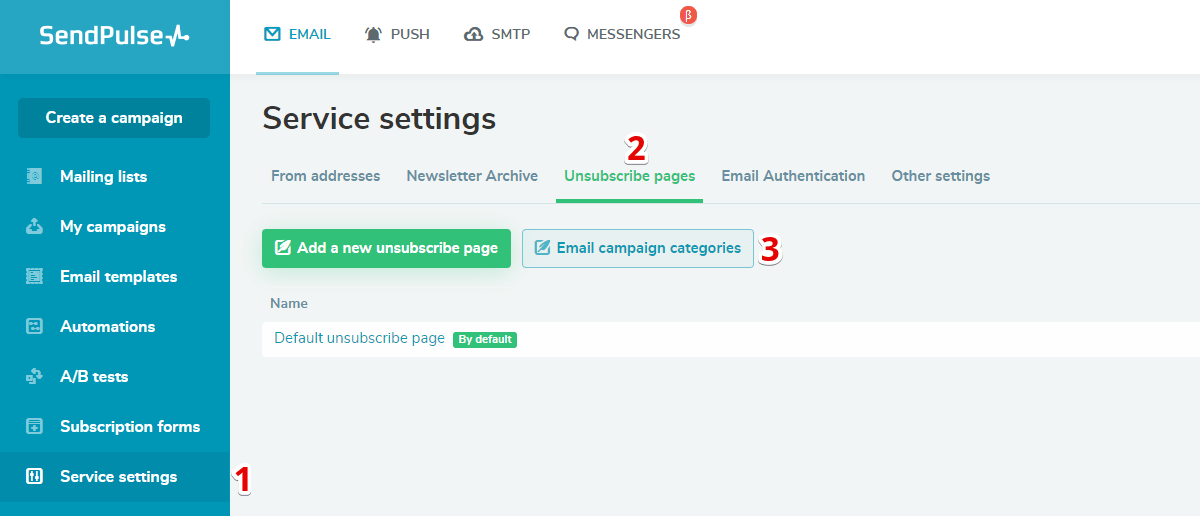
Email archiving
There is an opportunity to add the email campaign to an archive. Thus, you will have access to the emails you sent even after deleting the data from your account.
Automation 360
Enable automated email series based on the trigger actions of customers. For this, you need to have an Automation 360 flow set up.
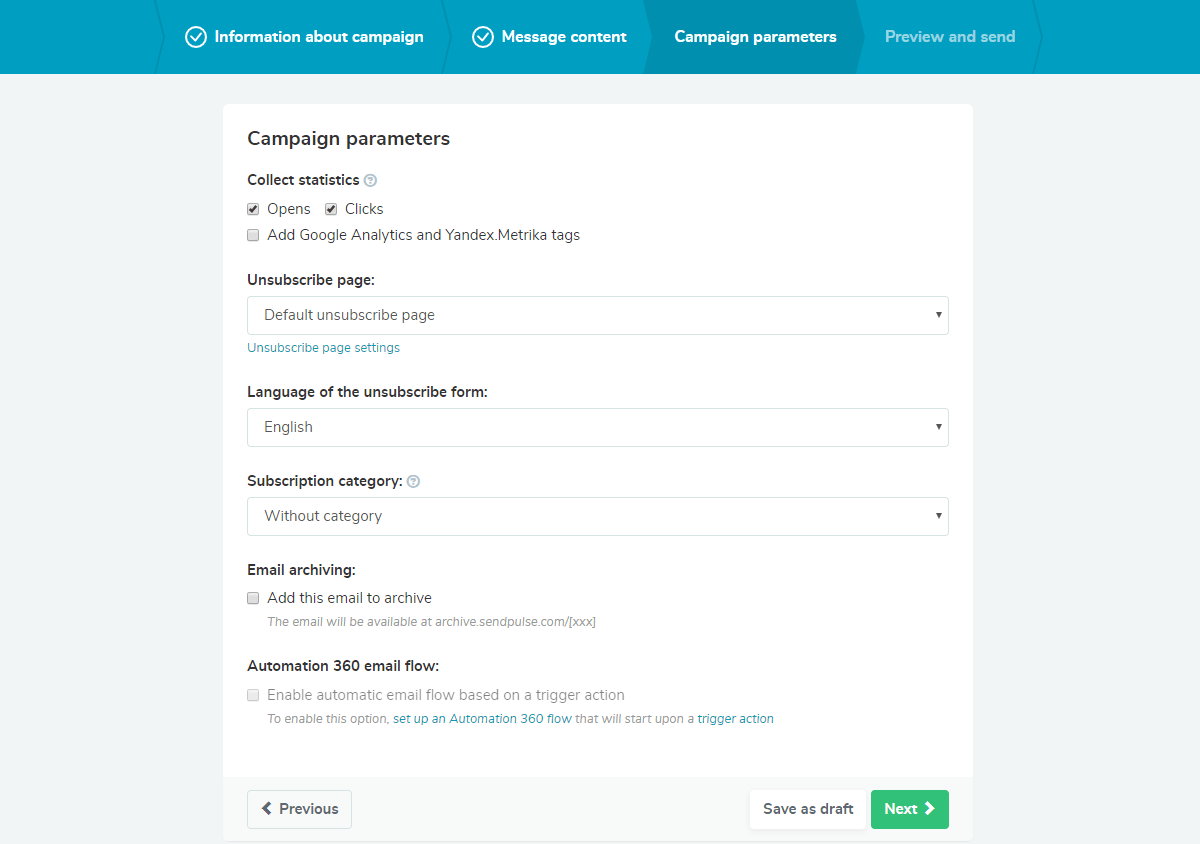
Step 4. Review and send
Service displays complete information about the created campaign: mailing list, category, sender email address, and subject line. Besides, you can preview how the email will look in the customers’ inboxes.

Resend to unread
If a subscriber didn’t open your email, you could enable resending emails to unread. You need to create a new subject-line, set the time, and sending date.

Scheduler
SendPulse has the option to schedule the campaign. You specify the necessary date and time by the needed time zome, and the server will start the campaign at a particular time automatically.
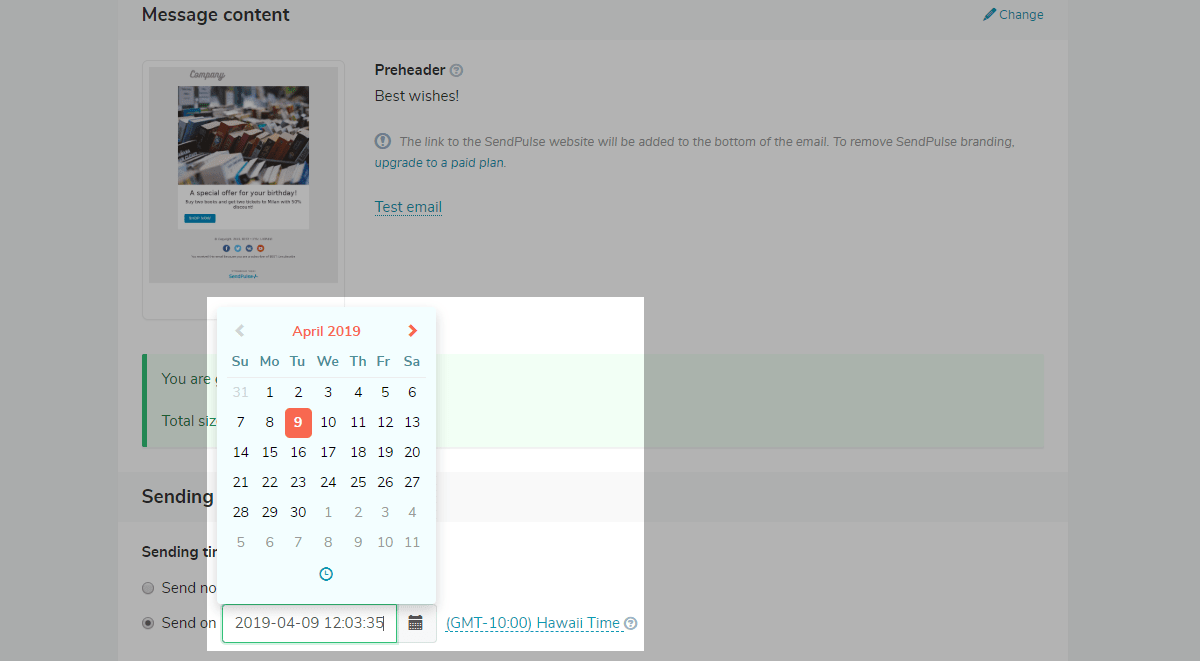
If all the data is correct, press "Start" to start the campaign.
You may have noticed that I said nothing about service settings. That is because you do not need to find and set up an SMTP server or customize other settings on using SendPulse. The server copes perfectly with all the necessary settings.
Last Updated: 08.08.2022
or